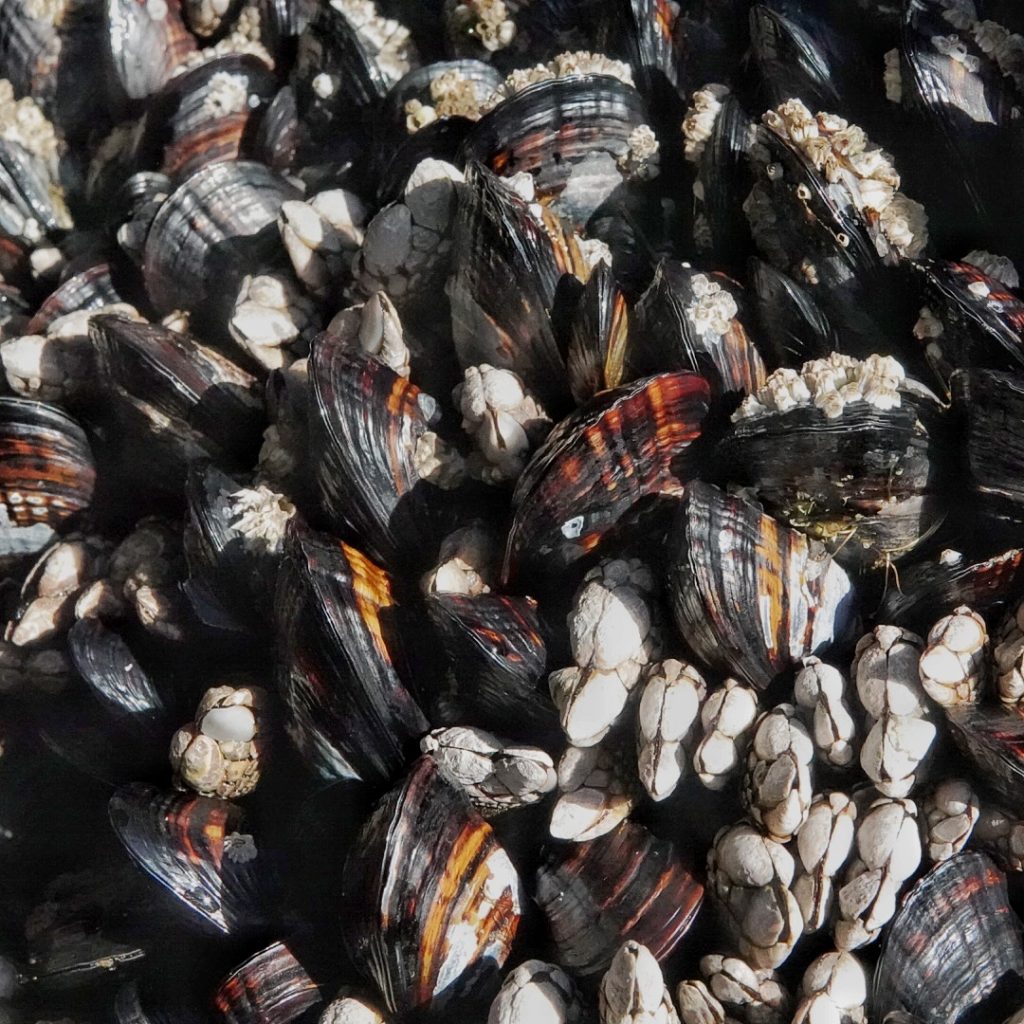
During a recent spate of good weather, Pam and I took a trip to the Oregon coast, Arch Cape to be specific. Neither of us had ever been there before, and on the satellite image it looked like there was fairly easy access to some good tidepool habitats. It was a beautiful sunny day, mid 50s with little wind, and I was way overdressed for the conditions, as well as wearing rubber boots that were ill suited to clambering around on the rocks. Those factors, combined with some rank disorganization on my part, limited my ability to find, photograph, and identify the denizens of those tidepools, but I did manage to document some cool-but-common creatures.
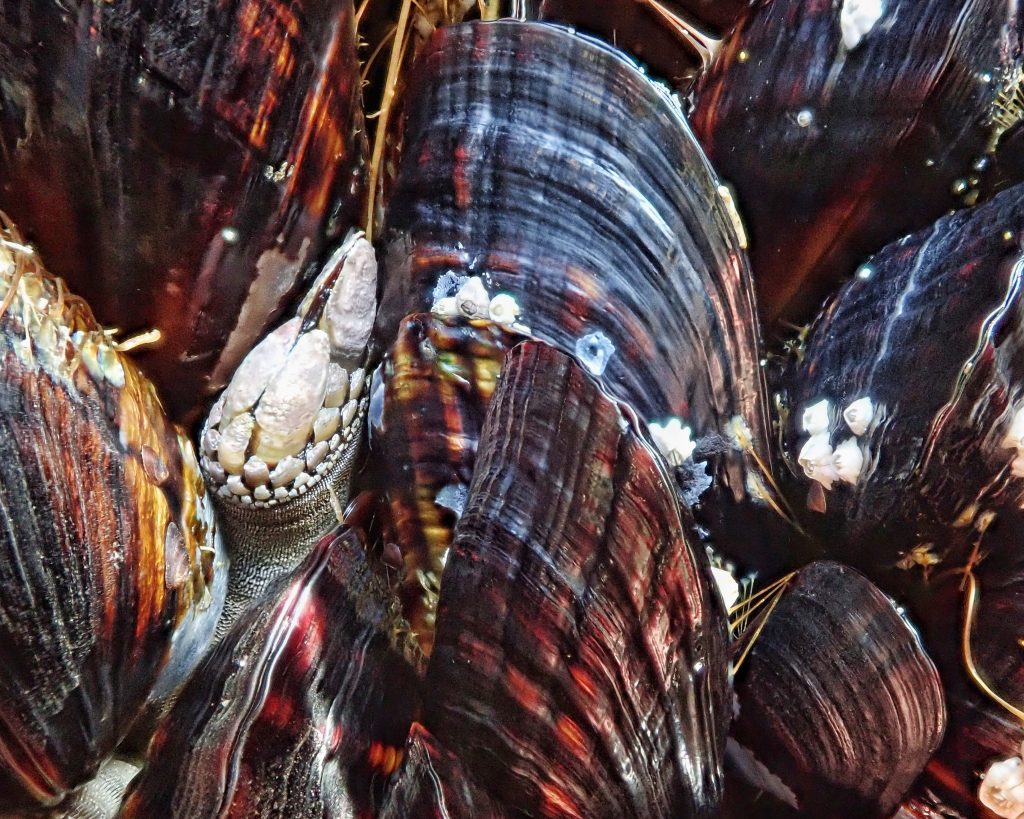
Today I thought I’d write about the marine bivalve Mylitus californianus, a mussel that goes by the common names ribbed mussel (my personal favorite because of its descriptiveness), California mussel, surf mussel, and sea mussel. These are very common mussels, by far the most common mussel in rocky areas of our open coast, and anyone who has visited those kind of areas in our region has undoubtedly seen them. They grow in huge colonies, more or less blanketing the rock from the splash zone on down. As filter feeders they are dependent on immersion (at least temporarily), so the lower they go in their tidal habitat the longer they can feed, and the larger they grow. The average Mylitus califorianus will filter 2-3 liters of water per hour.
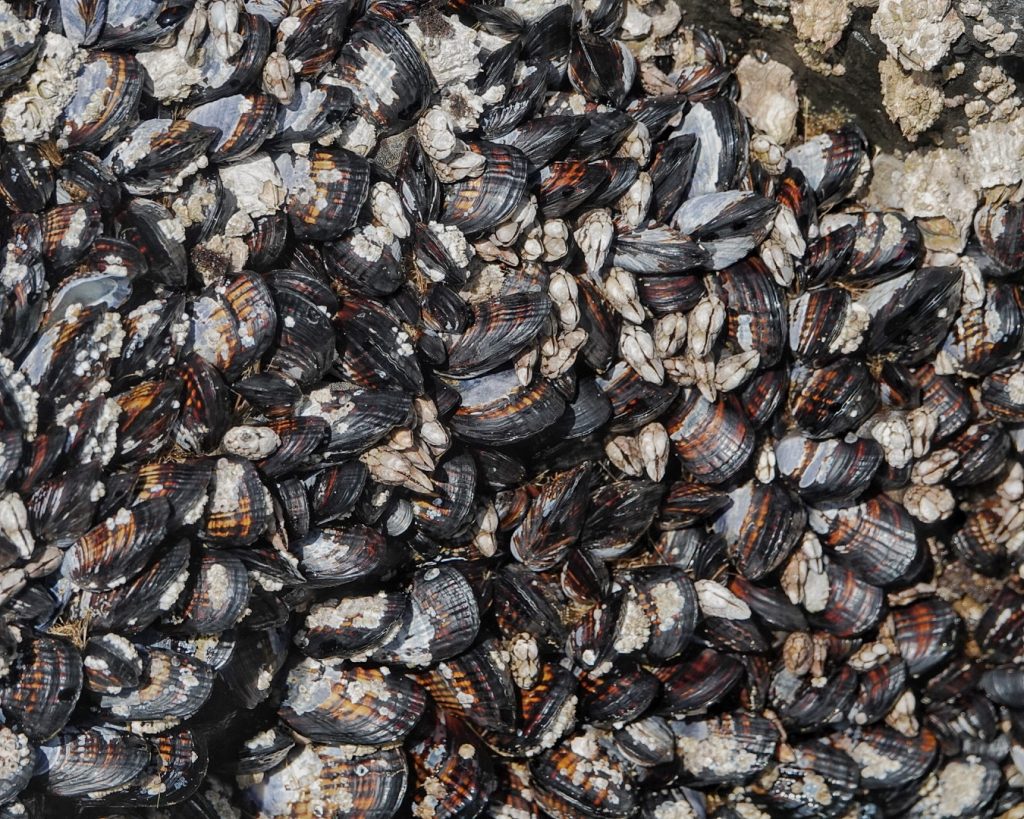
The feeding mechanism of these Mollusks is quite elegant in its simplicity. When submerged they open slightly and use cilia to move water over their gills, which are covered with a layer of mucus. Internal palps then sort the catch, and deliver viable food to the mouth. It is interesting to note that they are conditioned to feeding during high tide while immersed, and even when attached to a substrate that is perpetually submerged, such as the underside of a drifting log or in a laboratory, they will still feed in rhythm to the high tide cycle.
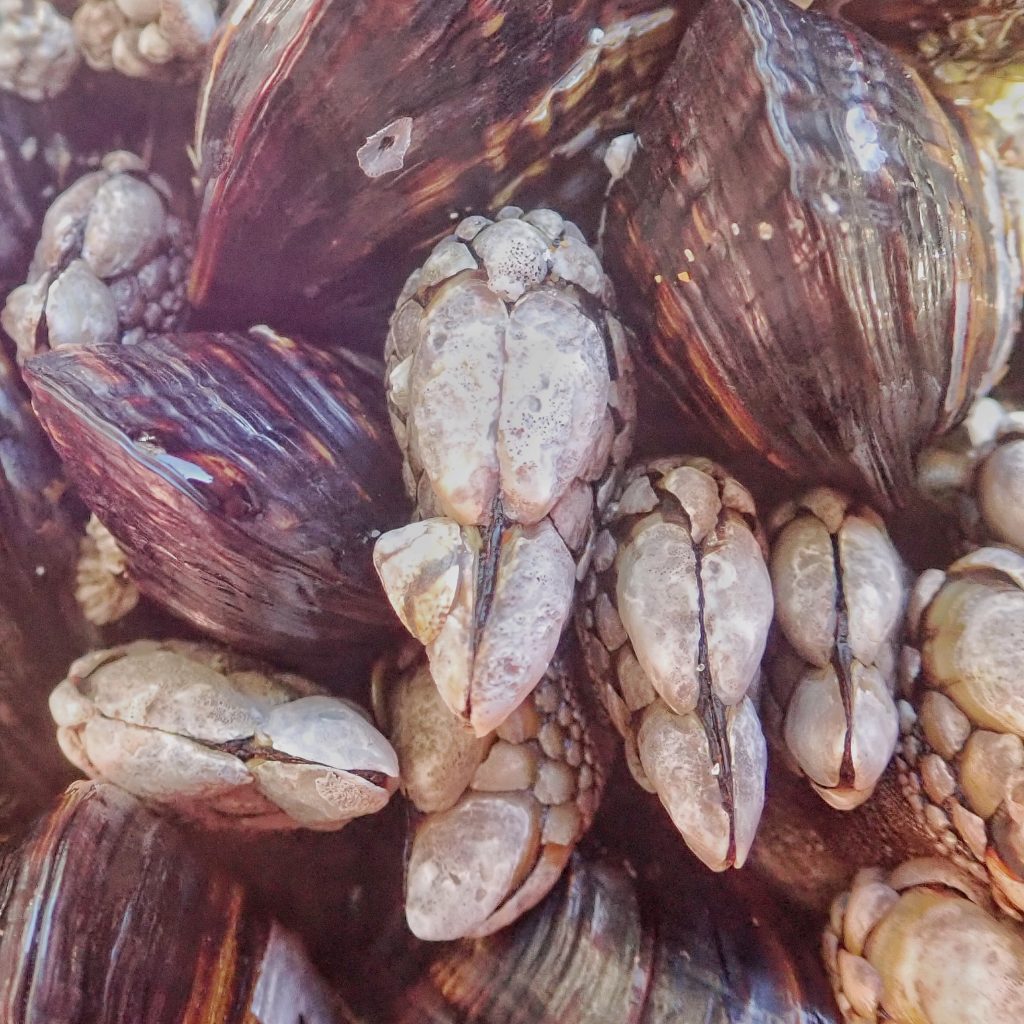
They have an extendable foot, so they can move about, but they don’t actually use that foot to move. Nor do they use that foot to anchor themselves. Instead they have byssal threads, which issue from the byssal gland in the foot, that they can attach to the substrate, and they pull themselves forward with them. They also attach 50-100 of these byssal threads whenever they are at rest to anchor themselves against wave action. The threads are somewhat elastic, and will stretch up to 64% before breaking, making for a nice shock absorber, and effective in flows of up to 50cm/s. One of the benefits of the tight aggregations of this species is that it reduces water flow over each individual, and allows them to stay anchored in stronger flows.
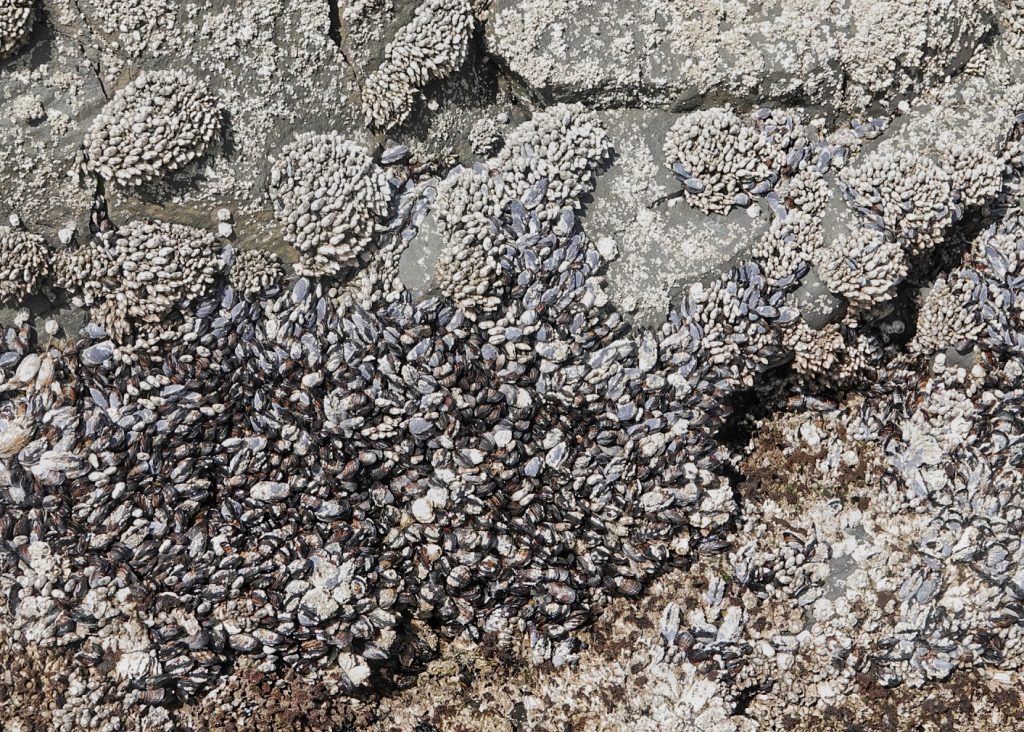
Ribbed Mussel beds form the structure of many a large marine seashore community, hosting as many as 300 species, including various anenomes, worms, gastropods, barnacles, algae, oysters, fish, and even octopi, amongst many others. Gooseneck barnacles, a species I will be profiling tomorrow, are particularly prevalent in most exposed mussel colonies I’ve seen, although the mussels will eventually crowd them out by smothering and crushing them.
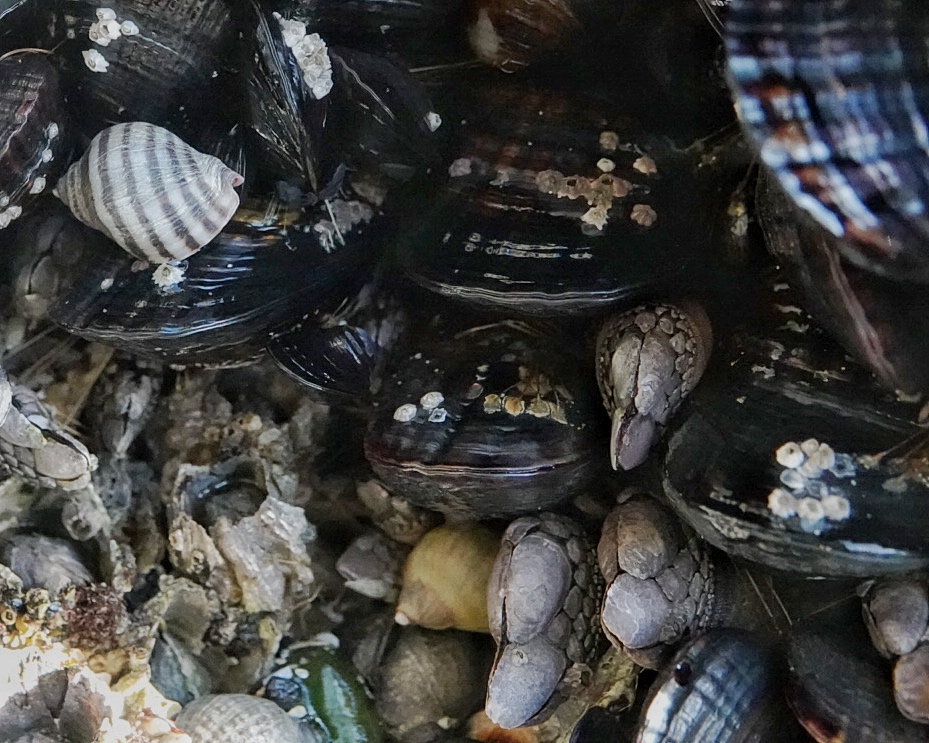
Mylitus californianus was an important resource for the indigenous peoples of the region, especially in winter when food resources were scarcer. They were an easily harvested food source, and are said to have one of the highest levels of nutrients of any of our region’s bivalves, containing 17 vitamins, 16 minerals, and 10 essential amino acids (because of this and their rapid growth rates they have been investigated as an aquaculture crop). They were usually either roasted or boiled and eaten fresh, or roasted until the shell opened and dried for future rehydration and consumption. Indigenous peoples also used the shell for various tools and implements.
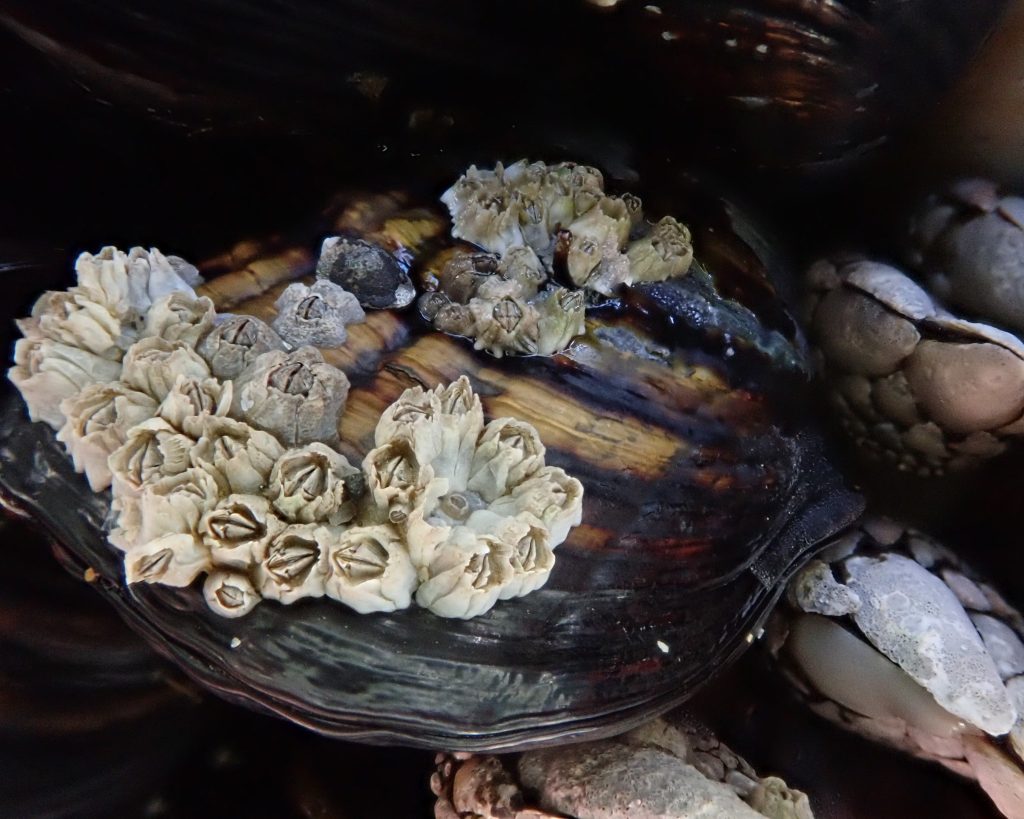
Description-Fairly good sized (can be up to 10” long) mussels with a blue black shell that often has brown areas of periostracum (the thin, organic outer layer of the shell), especially in younger mussels; has raised transverse growth rings, as well as rounded radial carinae (ridges), creating an irregular crosshatching effect; tends to be about twice as long as wide; more or less pointed at the anterior end (umbo); interior is blue grey, somewhat iridescent.
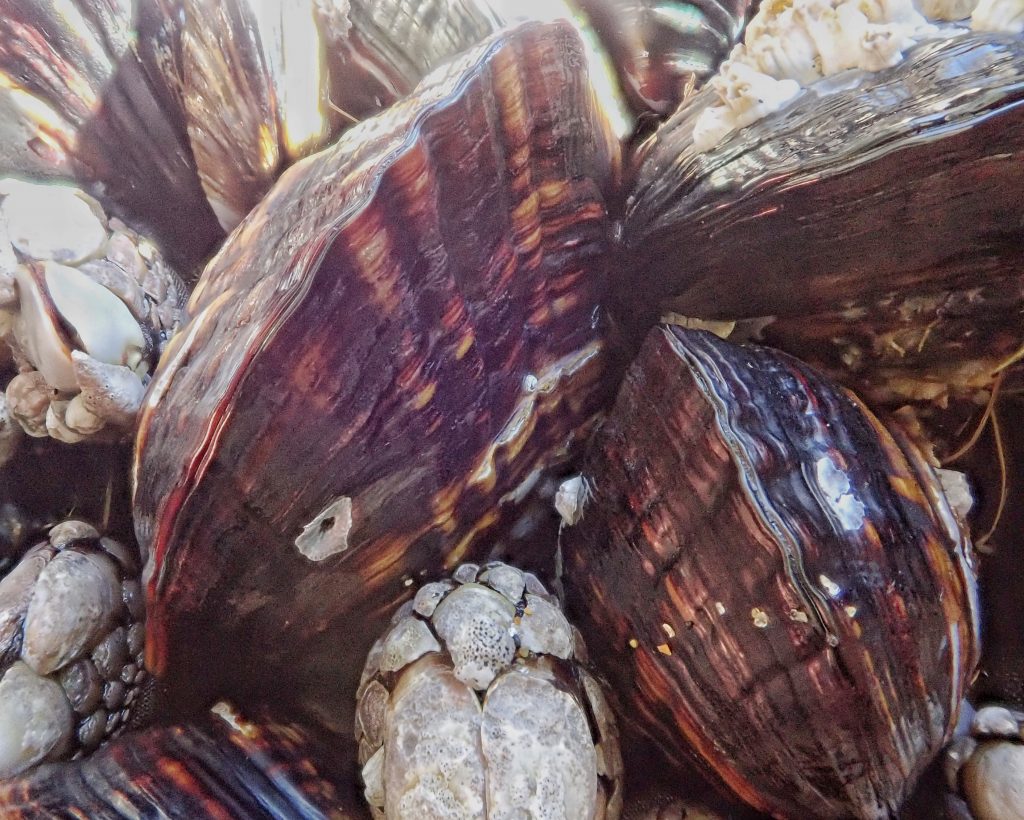
Similar species–Mytilus trossulus has a much smoother shell with only indistinct radial carinae, tends to live in bays and areas without heavy surf, and it tends to be less than twice as long as wide.
Habitat-Wave swept rocks and other firm substrates of the saltwater or brackish intertidal zone, down to about 75’ deep.
Range-West Coast of North America; all non-sand portions of the coastline in our region.
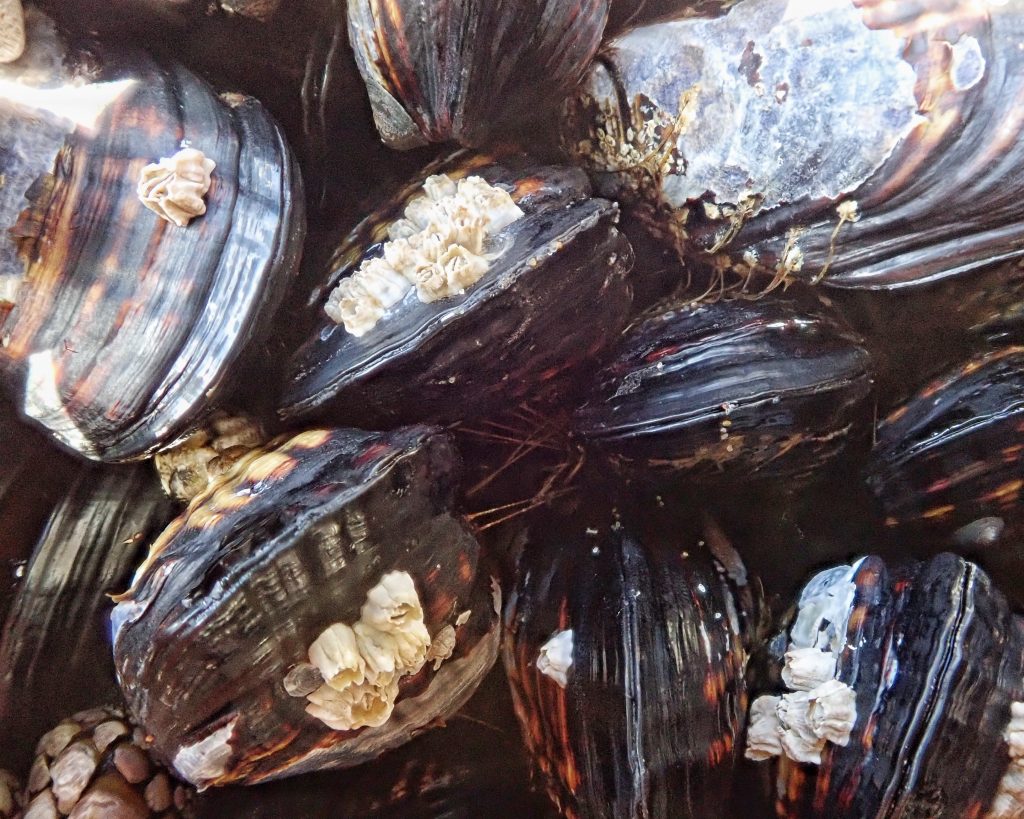
Eats-Filter feeder; consumes dinoflagellates, organic particles, small diatoms, zoospores, protozoa, unicellular algae, bacteria, and detritus.
Eaten by-Larval mussels are consumed by many fish, including surf perch; small mussels are prey for many organisms, including oystercatchers and other seabirds, a wide variety of crabs, and predatory sea snails that bore holes in their shell and feed on the tissues within; the primary predators of adult mussels are sea otters and Pisaster ochraceous (Ochre or Purple Sea Star) our most commonly encountered starfish. They are also vulnerable to parasitic isopods, pea crabs, and sea spiders (pycnogonids).
Adults active-Year around
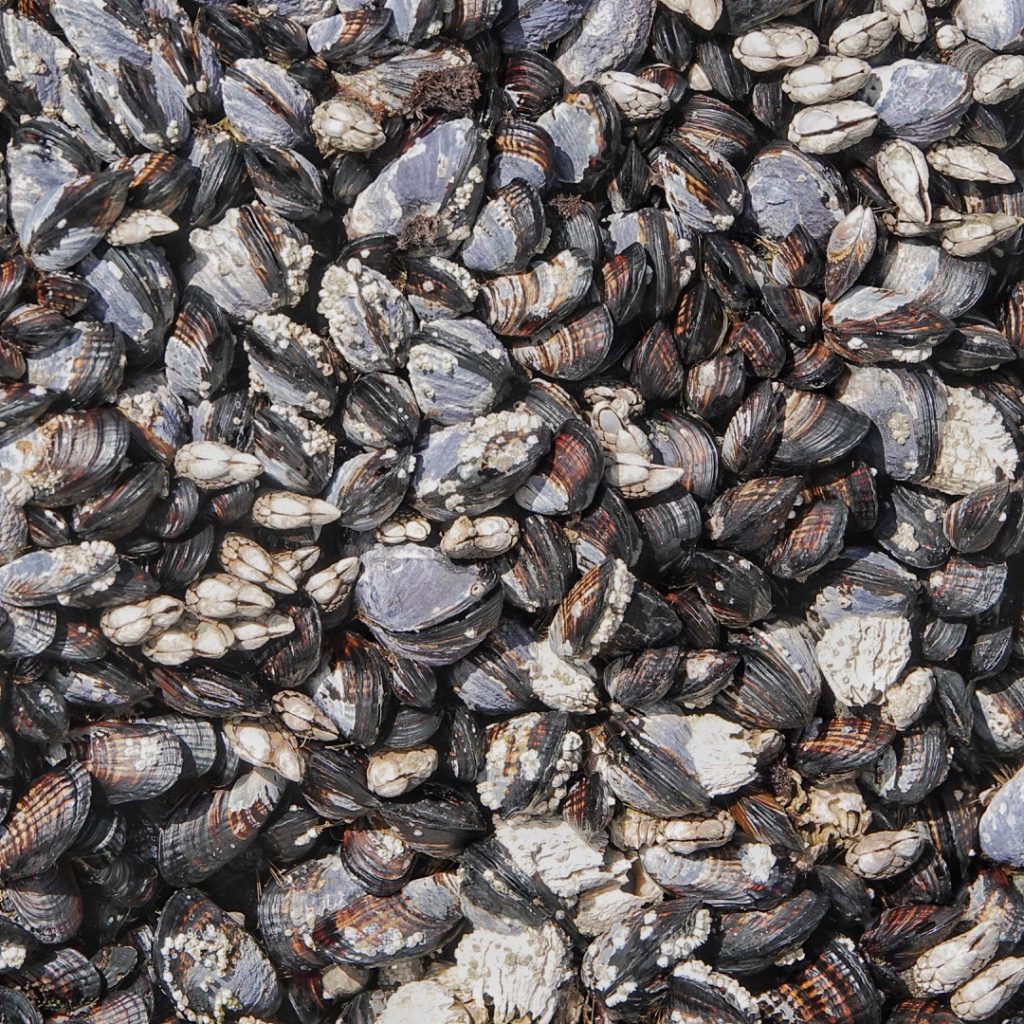
Life cycle-Spawns year around, but peaks around each solstice; eggs and sperm are released into the water, and within a day of fertilization they are free swimming larvae (trochophores); within another day they develop a straight hinged shell and are called veligers; in 2-3 weeks they settle onto a substrate, and use their newly developed foot and byssal threads to search for suitable attachment points; sexual maturity is reached in 3 years, and mature females may release up to 100,000 eggs per year; ultimate longevity is unknown
Etymology of names–Mytilus is from the Greek word for mussel. The specific epithet califorianus refers to the location of the type specimen.
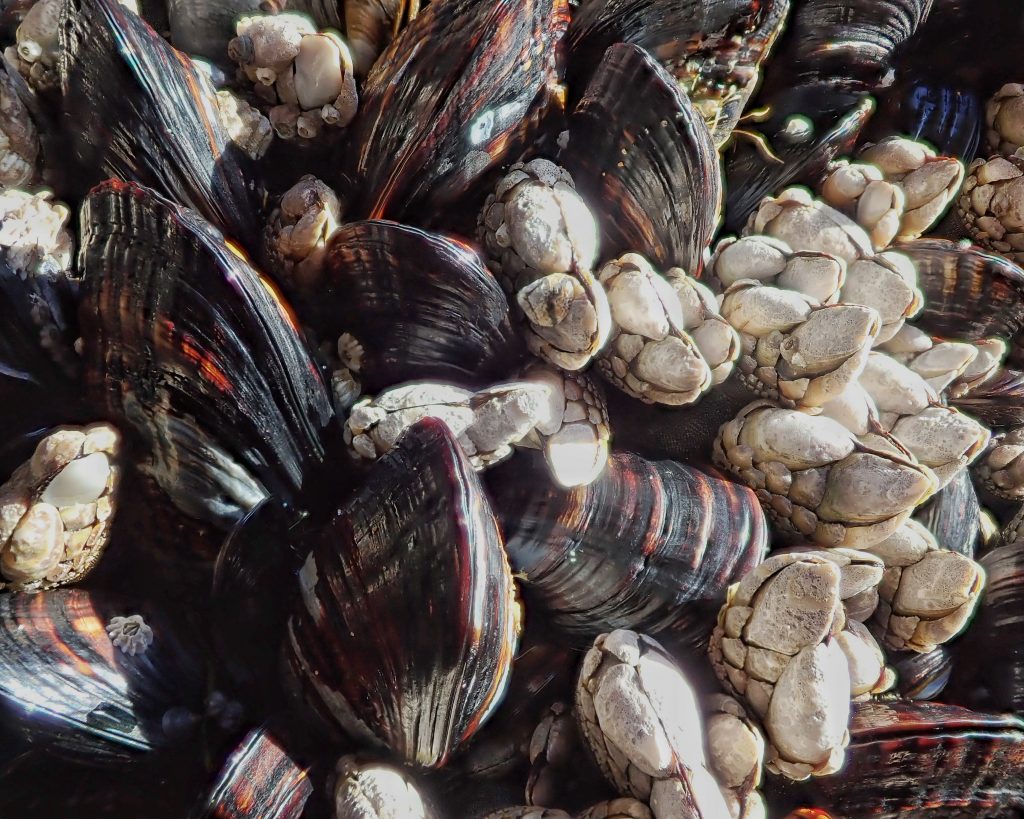
https://animaldiversity.org/accounts/Mytilus_californianus/
https://inverts.wallawalla.edu/Mollusca/Bivalvia/Mytiloida/Mytilidae/Mytilus_californianus.html
https://en.m.wikipedia.org/wiki/Periostracum
https://en.m.wikipedia.org/wiki/Byssus
https://www.thoughtco.com/byssal-byssus-threads-2291697
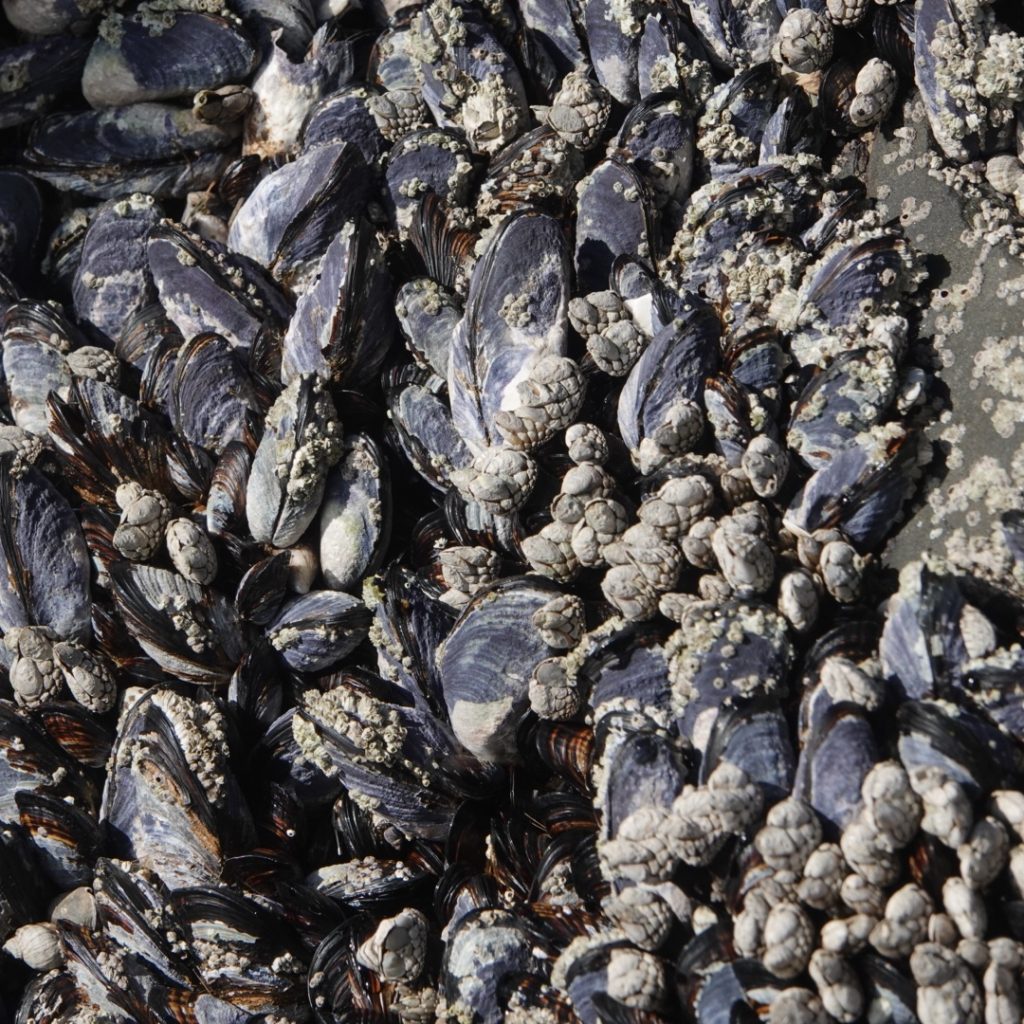
Fascinating!
Thanks!
I enjoyed this a lot
Thank you for your appreciation!